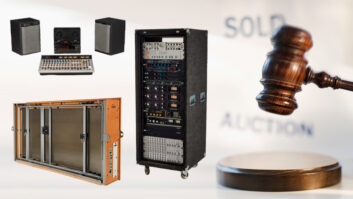
For Mercury Rev’s eighth studio album, The Light In You, vocalist Jonathan Donahue, recorded his initial ideas at home into a 1970s mono cassette player, a method he retains from his early musician days. “It feels conversational to me,” Donahue says. “It has that ‘just be yourself’ quality as opposed to, ‘be yourself but hey, the big red light’s on, you’re paying $100 an hour to be yourself.’ There’s a warble, a warmth and a hissing on the edges. Whatever magic you had one moment late at night on a cassette, you try to bring that into the final product.”
For all Mercury Rev albums until The Light In You, an 8-track Tascam had been used, but Donahue couldn’t get his hands on one this time, hence the cassette player. Donahue transfers his ideas to Ableton while his Mercury Rev partner, Grasshopper, works on Logic at home. It is these files they take to bass player Anthony Molina, and their engineer since the ’90s, Scott Petito, and NRS Studios in the Catskills.
“The biggest issue comes from [Donahue] monitoring strictly in headphones, nothing sounded the way he thought it did,” Petito says. “The problem is in terms of overall frequency. Mercury Rev tends to write and record in a dense way. Lots of stuff in the midrange, in the low end, and [Donahue] sings very high and there is a lot of stuff that competes in his vocal range. The trick was to eliminate what we don’t need and sculpt the arrangement with only what was needed.”
On tracks like “Amelie,” “Sunflower,” “Rainy Day Record” and “Moth Light,” the challenge is even greater as strings and brass are brought into the already busy arrangement. Petito’s method was to approach the sounds in terms of frequency range rather than individual instruments. Eventually, all the sounds are brought down to 12 stems.
“We ease in a lot of instruments, melodies and counterpoints within a rock context,” says Donahue. “You can’t dump everything on top of each other. It takes a lot of work.”







